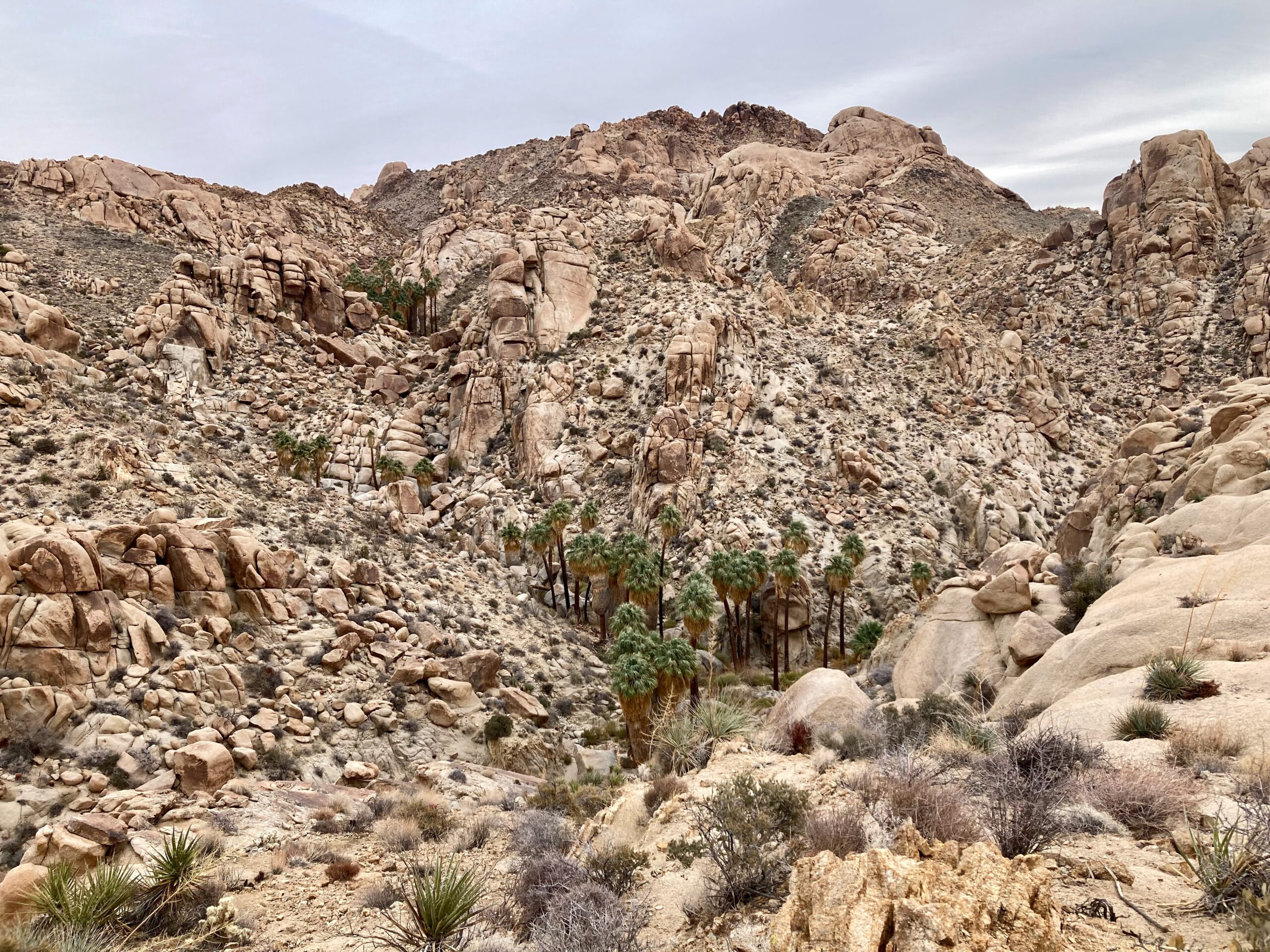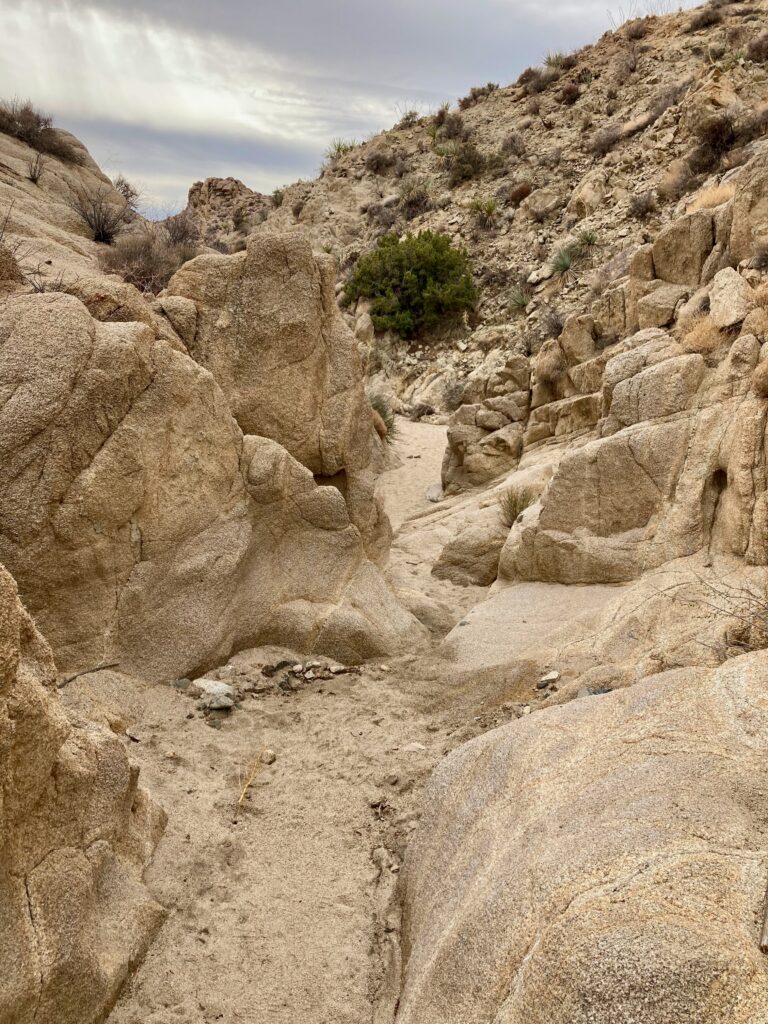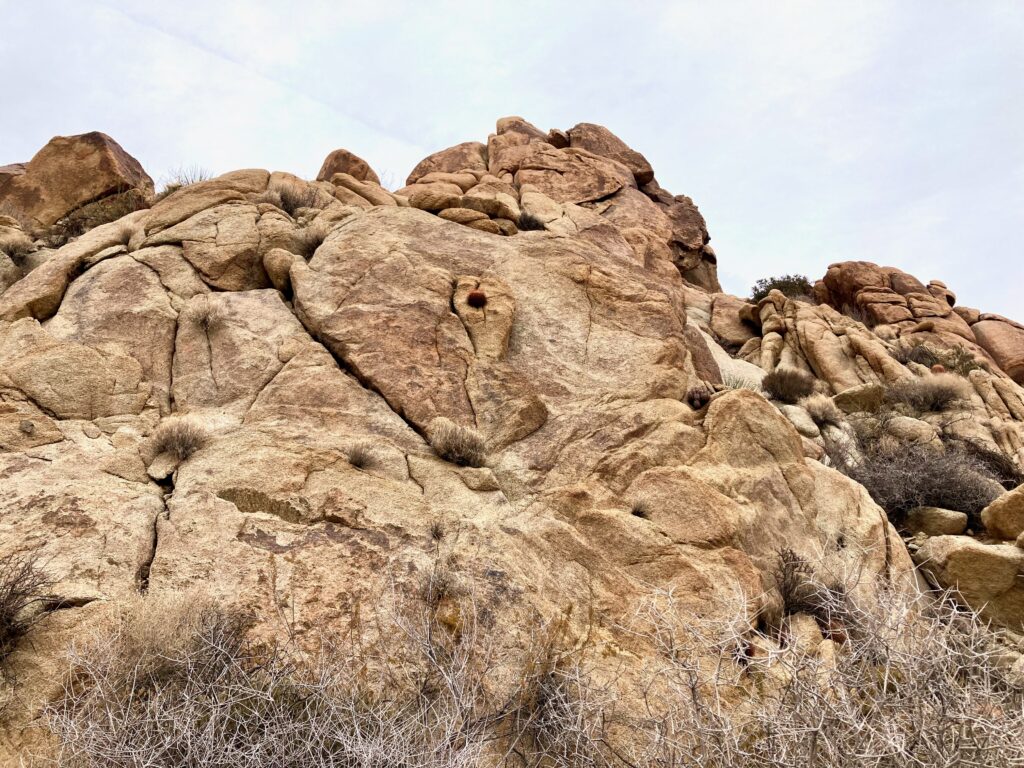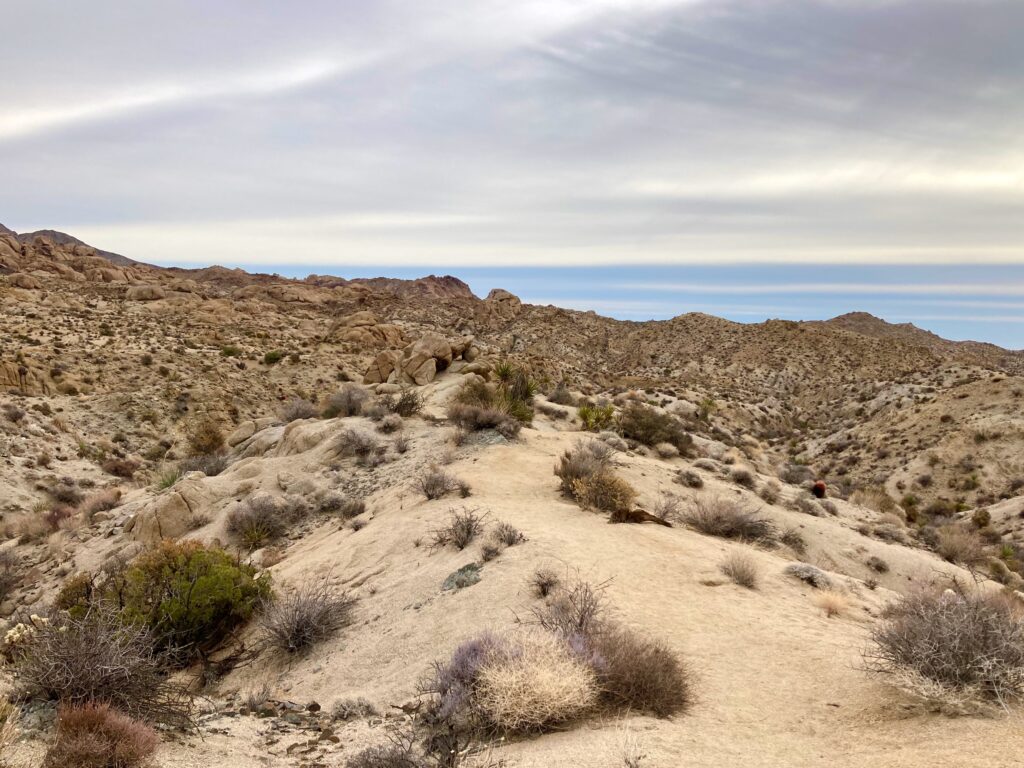My favorite hike in Joshua Tree this trip was to Lost Palms Oasis which heads 3.6 miles out across the desert to reach a permanent spring that nourishes a thriving colony of fan palms.
The trail sets off from Cottonwood Spring, another desert oasis that provided food, water, and shelter to indigenous peoples for centuries. In the early 1900s, when prospecting and ranching brought more and more people to the desert, the spring was an important watering stop and crossroad in this part of the desert. It is thought that the cottonwood trees that give it its current name and were purposefully planted at this time. During this prospecting phase the water from Cottonwood Spring was used to process ore from the nearby Mastodon Mine, contaminating the soil with heavy metals that persist to this day. (This is why we can’t have nice things).
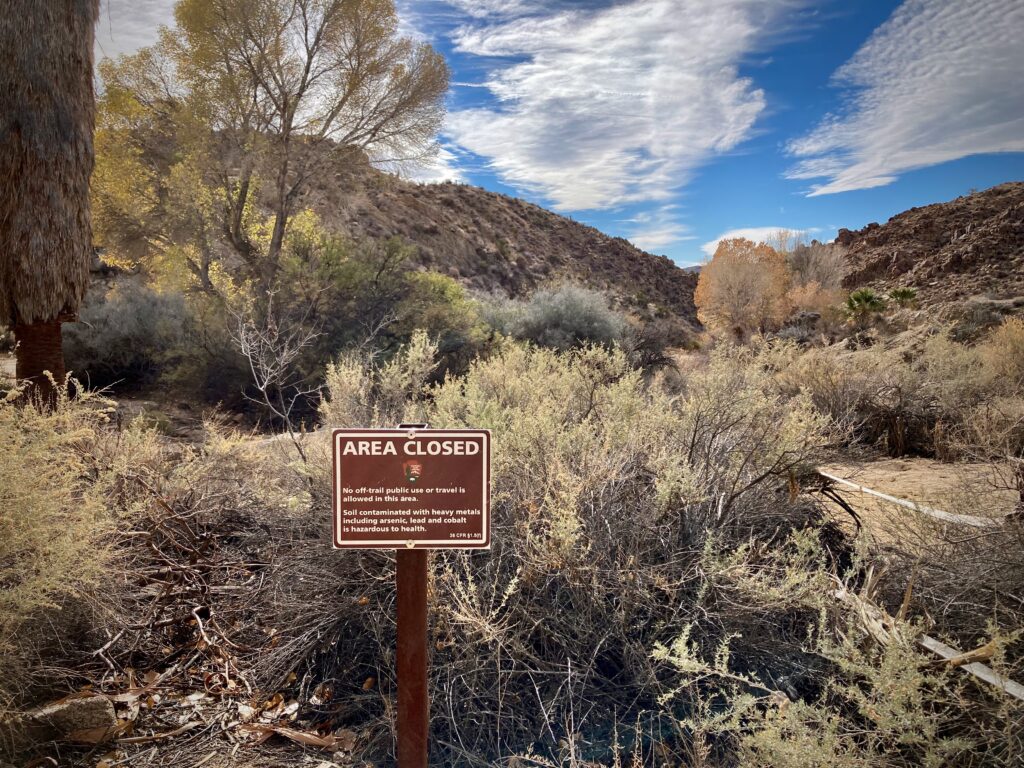
It doesn’t take long walking across the desert for the trees that surround the spring to give way to wind and water carved rocks with sparse and prickly vegetation.
The trail wanders up and down a bit, alternating between the sandy bottom of a dry wash and higher ridges. Since I was hiking solo, I kept to the trail and resisted the temptation to explore the dry canyons that intersect the trail. Another day.
The official end of the National Park Service trail is at the rim of Lost Palms Canyon, guarded by a rather menacing ocotillo.
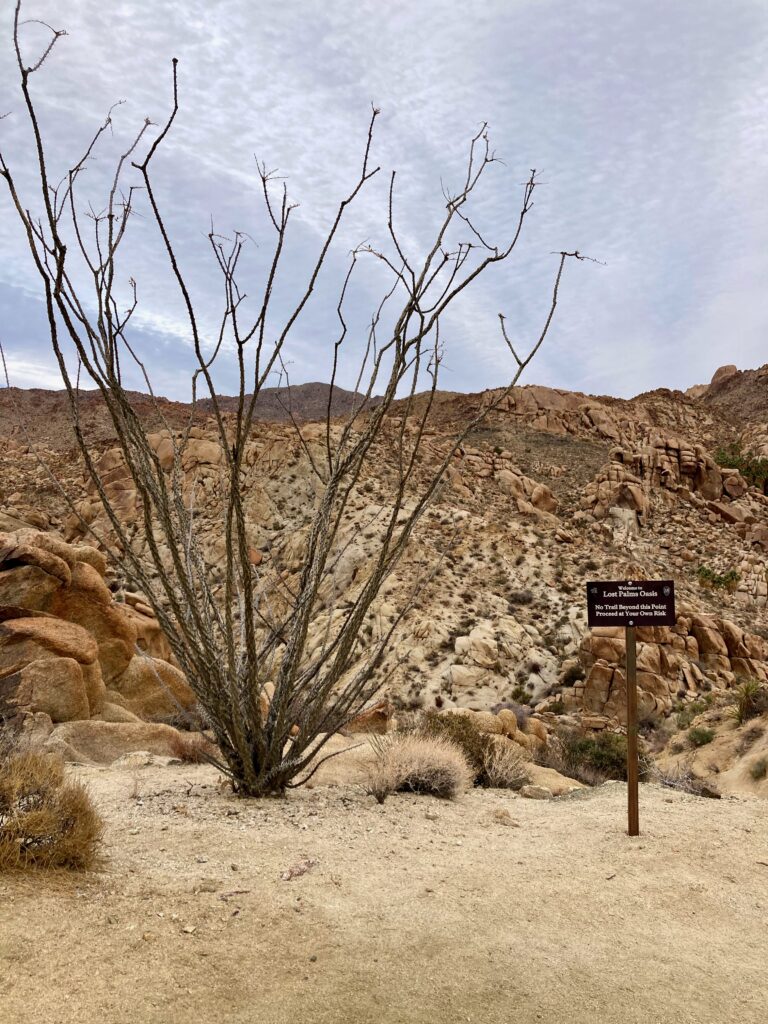
While the NPS may not acknowledge a trail beyond the sign, I found it relatively easy to follow a herd path along the canyon rim to viewpoints overlooking the canyon. Similarly, the trail past the sign down to the canyon floor was clear and had definitely been built with intention by humans. Although this is an ideal habitat for desert bighorn sheep, I doubt that their trails would be so friendly to flatfooted bipeds.

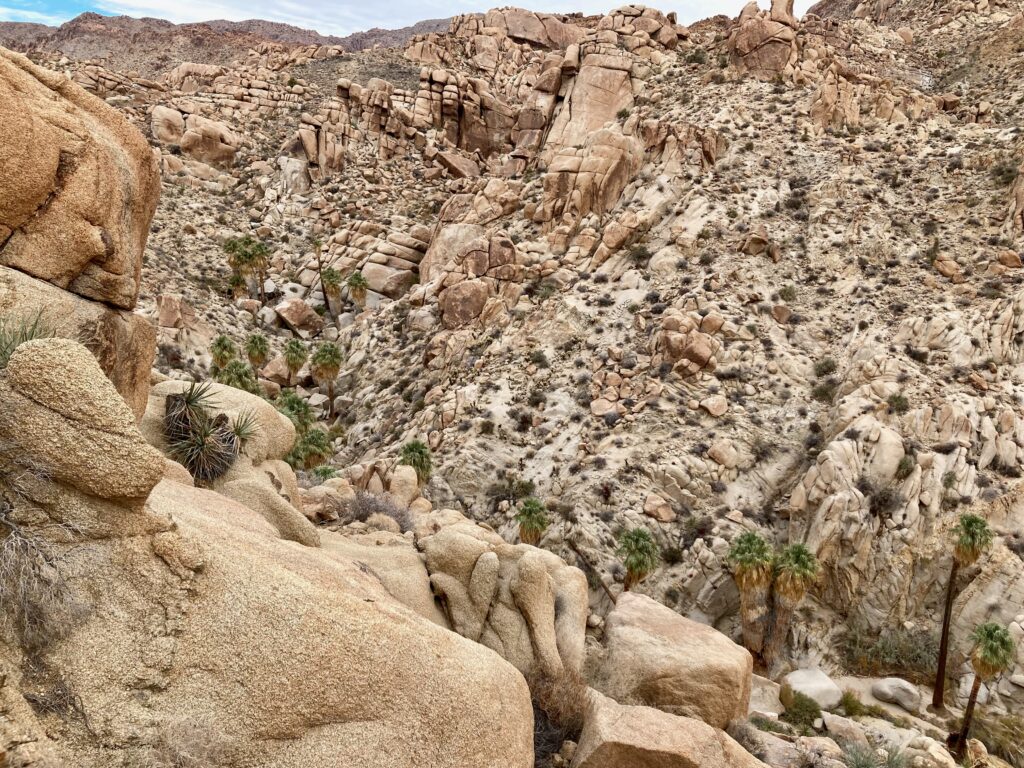
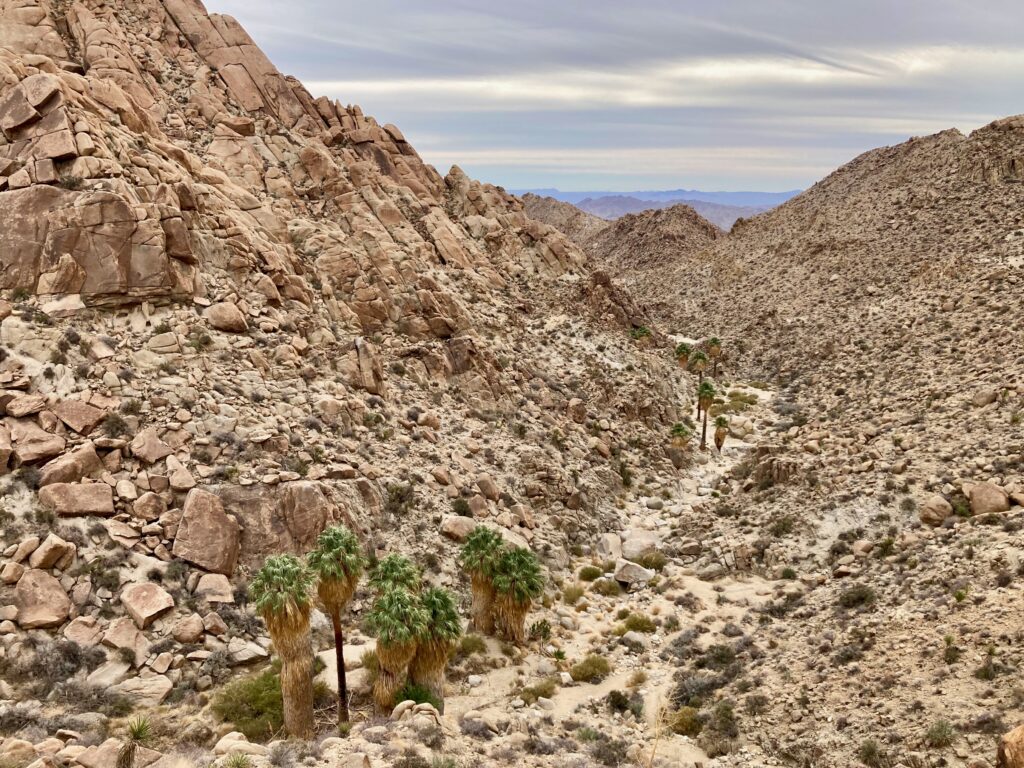
I couldn’t resist scrambling down to the valley floor and walking among the towering palms between the towering rocks.
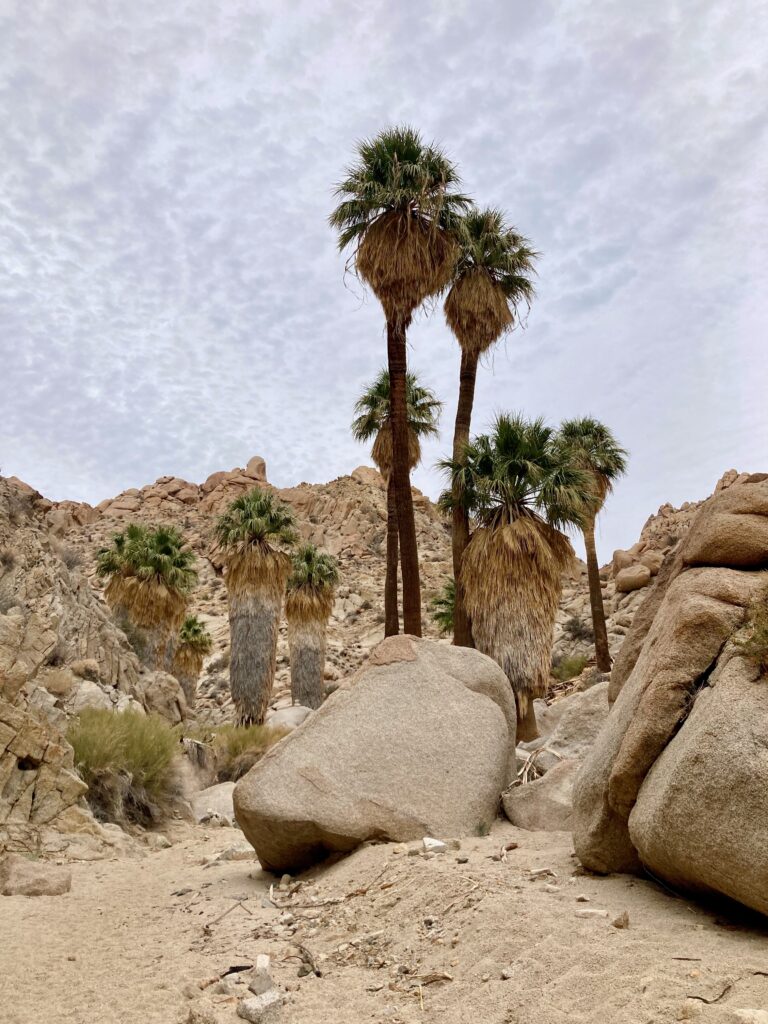
Nestled among the rocks and palm roots, surrounded by fallen fronds, I found the pool of water that makes this all possible. I also found the rusted remains of iron pipes leading further down the valley. Did some earlier visitor try to tap this spring to water livestock? I’m grateful it wasn’t entirely successful.

